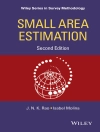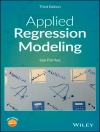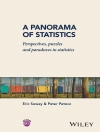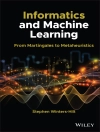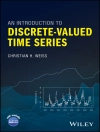An essential guide to the concepts of probability theory that puts the focus on models and applications
Introduction to Probability offers an authoritative text that presents the main ideas and concepts, as well as the theoretical background, models, and applications of probability. The authors–noted experts in the field–include a review of problems where probabilistic models naturally arise, and discuss the methodology to tackle these problems.
A wide-range of topics are covered that include the concepts of probability and conditional probability, univariate discrete distributions, univariate continuous distributions, along with a detailed presentation of the most important probability distributions used in practice, with their main properties and applications.
Designed as a useful guide, the text contains theory of probability, de finitions, charts, examples with solutions, illustrations, self-assessment exercises, computational exercises, problems and a glossary. This important text:
* Includes classroom-tested problems and solutions to probability exercises
* Highlights real-world exercises designed to make clear the concepts presented
* Uses Mathematica software to illustrate the text’s computer exercises
* Features applications representing worldwide situations and processes
* Offers two types of self-assessment exercises at the end of each chapter, so that students may review the material in that chapter and monitor their progress.
Written for students majoring in statistics, engineering, operations research, computer science, physics, and mathematics, Introduction to Probability: Models and Applications is an accessible text that explores the basic concepts of probability and includes detailed information on models and applications.
Table of Content
1 The Concept of Probability 7
1.1 Chance experiments – Sample spaces 8
1.2 Operations between events 19
1.3 Probability as relative frequency 37
1.4 Axiomatic definition of probability 52
1.5 Properties of probability 61
1.6 The continuity property of probability 71
1.7 Basic concepts and formulas 79
1.8 Computational exercises 80
1.9 Self-assessment exercises 82
1.9.1 True{false questions 82
1.9.2 Multiple choice questions 84
1.10 Review problems 86
1.11 Applications 93
2 Finite Sample Spaces – Combinatorial Methods 101
2.1 Finite sample spaces with events of equal probability 102
2.2 Main principles of counting 113
2.3 Permutations 121
2.4 Combinations 132
2.5 The Binomial Theorem 151
2.6 Basic concepts and formulas 163
2.7 Computational exercises 164
2.8 Self-assessment exercises 172
2.8.1 True-false questions 172
2.8.2 Multiple choice questions 173
2.9 Review problems 177
2.10 Applications 185
3 Conditional Probability – Independent Events 189
3.1 Conditional probability 190
3.2 The multiplicative law of probability 206
3.3 The law of total probability 215
3.4 Bayes’ formula 225
3.5 Independent events 232
3.6 Basic concepts and formulas 254
3.7 Computational exercises 255
3.8 Self-assessment exercises 259
3.8.1 True-false questions 259
3.8.2 Multiple choice questions 260
3.9 Review problems 264
3.10 Applications 272
4 Discrete Random Variables and Distributions 277
4.1 Random variables 278
4.2 Distribution functions 285
4.3 Discrete random variables 303
4.4 Expectation of a discrete random variable 319
4.5 Variance of discrete random variables 341
4.6 Some results for expectation and variance 355
4.7 Basic concepts and formulas 365
4.8 Computational exercises 367
4.9 Self-assessment exercises 373
4.9.1 True-false questions 373
4.9.2 Multiple choice questions 375
4.10 Review problems 378
4.11 Applications 383
5 Some Important Discrete Distributions 389
5.1 Bernoulli trials and binomial distribution 390
5.2 Geometric and negative binomial distributions 407
5.3 The hypergeometric distribution 431
5.4 The Poisson distribution 448
5.5 The Poisson process 462
5.6 Basic concepts and formulas 473
5.7 Computational exercises 475
5.8 Self-assessment exercises 479
5.8.1 True-false questions 479
5.8.2 Multiple choice questions 481
5.9 Review problems 485
5.10 Applications 495
6 Continuous Random Variables 499
6.1 Density functions 500
6.2 Distribution for a function of a random variable 518
6.3 Expectation and variance 530
6.4 Other useful results for the expectation 542
6.5 Mixed distributions 550
6.6 Basic concepts and formulas 562
6.7 Computational exercises 563
6.8 Self-assessment exercises 569
6.8.1 True-false questions 569
6.8.2 Multiple choice questions 571
6.9 Review problems 574
6.10 Applications 582
7 Some Important Continuous Distributions 587
7.1 The uniform distribution 588
7.2 The normal distribution 598
7.3 The exponential distribution 633
7.4 Other continuous distributions 646
7.4.1 The Gamma distribution 647
7.4.2 The Beta distribution 651
7.5 Basic concepts and formulas 660
7.6 Computational exercises 662
7.7 Self-assessment exercises 666
7.7.1 True-false questions 666
7.7.2 Multiple choice questions 668
7.8 Review problems 672
7.9 Applications 680
About the author
N. Balakrishnan, Ph D, is a Distinguished University Professor in the Department of Mathematics and Statistics at Mc Master University in Ontario, Canada. He is the author of over twenty Wiley books and served as co-editor of the Wiley’s Encyclopedia of Statistical Sciences, Second Edition.
Markos V. Koutras, Ph D, is Professor in the Department of Statistics and Insurance Science at the University of Piraeus, Greece.
Konstadinos G. Politis, Ph D, is Associate Professor in the Department of Statistics and Insurance Science at the University of Piraeus, Greece.







